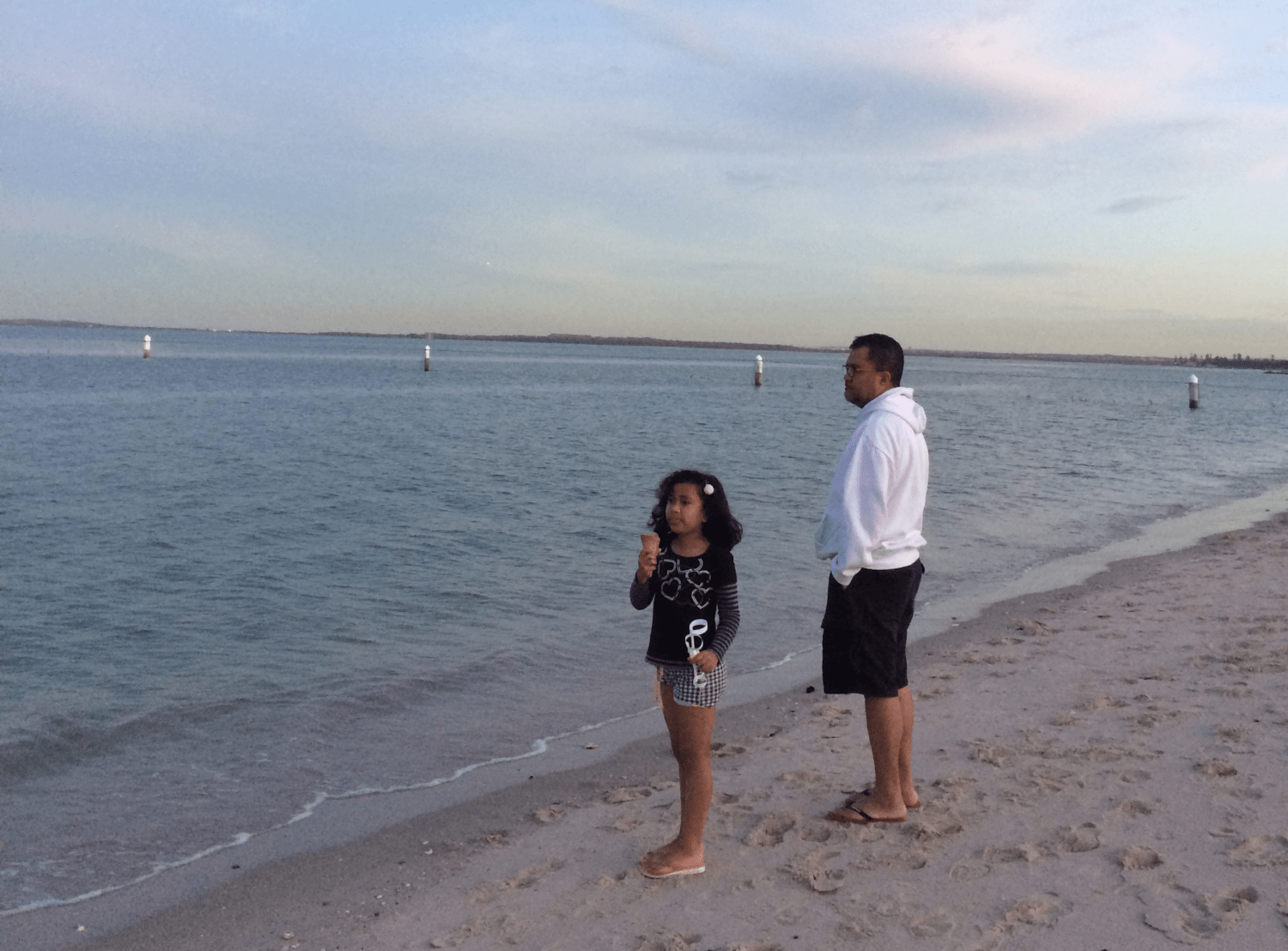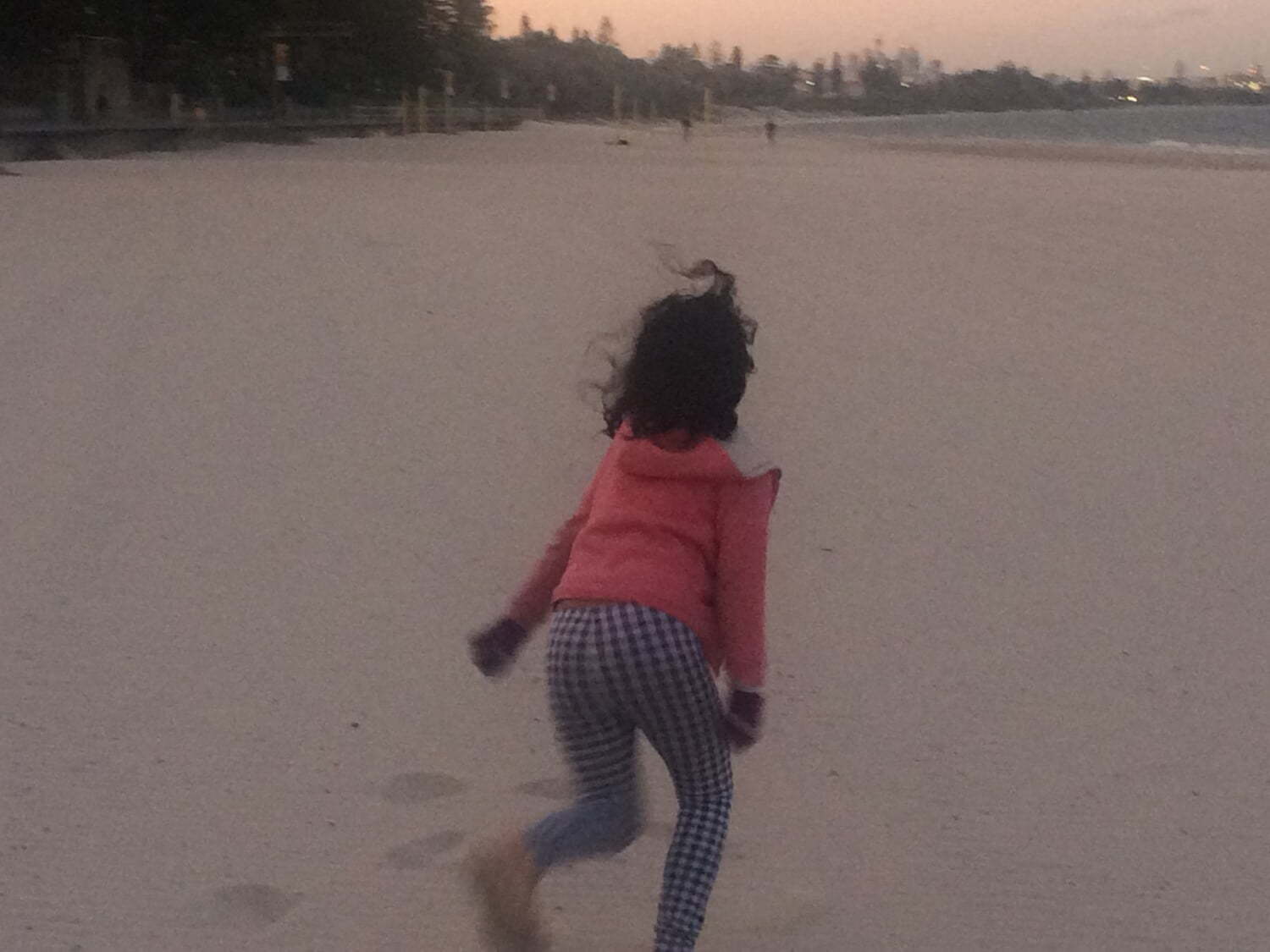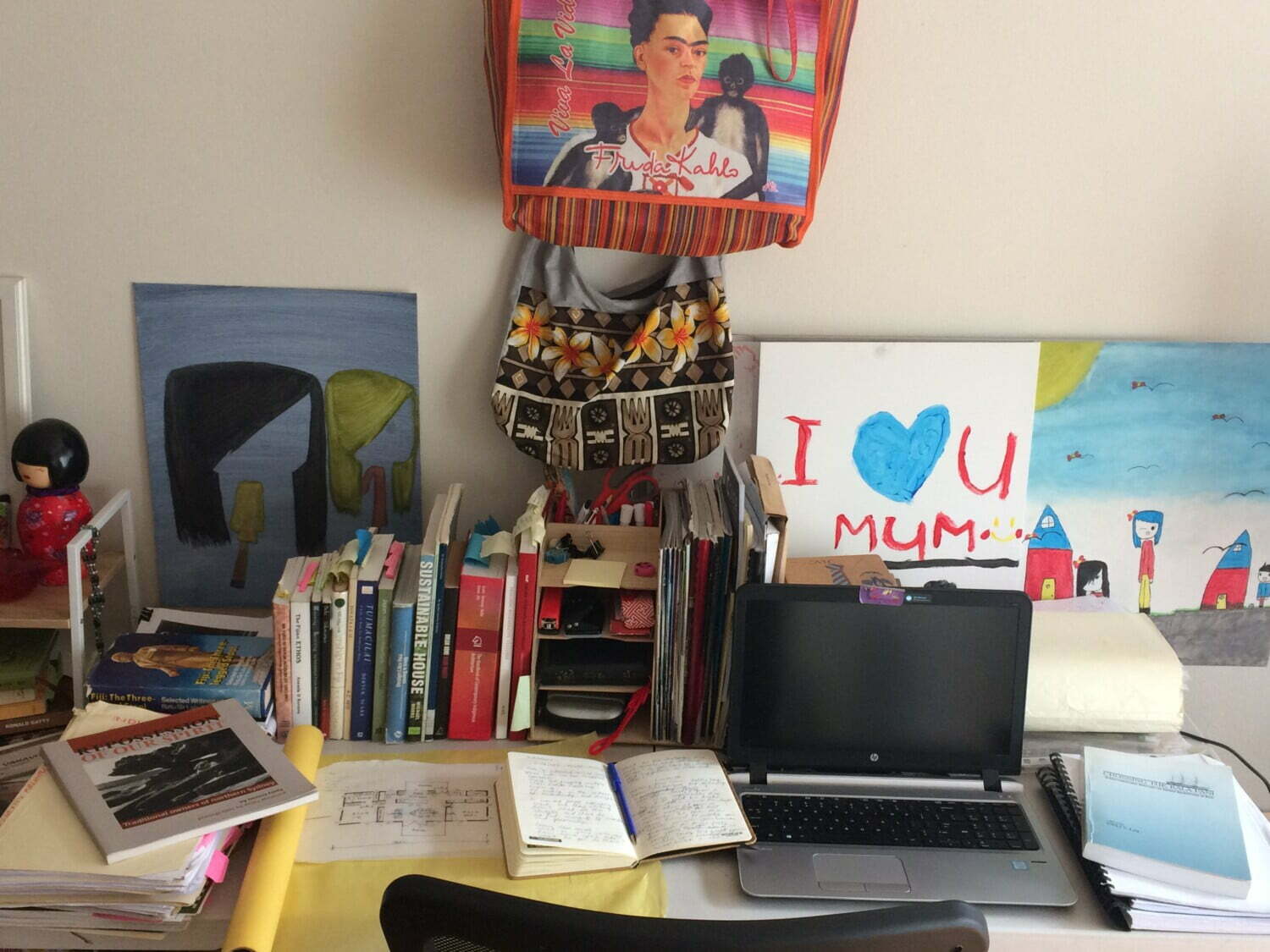Loata Ho describes her workspace in isolation, the challenges of life in lockdown, her research interest in Indigenous Fijian women’s knowledge, and her experiences after the 2008 economic downturn.
My workspace in isolation
My workspace in isolation is intimate and small, but always changing. Here with my little family in a typical two-bedroom rented unit in the southern suburb of Sydney, I’m far from the open spatial freedom of my tropical island home in Taveuni, Fiji.
My space is assembled into three main spaces, which is where I spend most of my time. My small living room is now transformed into my new and ever-changing workspace. I have an old, sturdy, square dining table and small three-seater lounge, an old brown Ikea rocking chair and my little bookshelf. I tend to move from one little space to the next depending on the time of day, as I am drawn to small intimate spaces that are cosy and warm. These spaces are transformed for reading, for writing, for my new exploration of painting with my seven-year-old daughter on canvas and fabric, and in addition now a full-time daily remote-learning program. Then, there’s a living space of diverse activities, personalised with my long love affair of handmade bags, some of which connect me to my Pacific heritage. My love of vibrant colours with scarves and beads adds a lively visual presence in my workspace. They have either been purchased at favourite markets such as Glebe or gifted to me over the years by close friends and family members.
My priceless collection, however, is Pacific Island handmade baskets made by rural women. I was privileged to visit rural Fijian villages for my research fieldwork in 2018 and others were gifts from family members through their travels in the Pacific, knowing how I love anything handmade.
Sitting at my dining table, I am off-centre from the visual axis that connects my physical workspace – via a small hallway defined by a patterned hall rug – to my daughter’s room and the private and utilitarian spaces of our home.
Life in lockdown
Working from home during COVID-19 has been both challenging and confronting. The first few weeks at home with the family were nice. Then, as the days turned to weeks, I began to miss having my own little space all to myself and the juggle of daily activities seemed never-ending. My domestic role took centre stage and my studies became secondary. I found myself constantly questioning how to achieve the right balance of work, motherhood and remote learning. My biggest challenge was managing schoolwork with a seven-year-old who, on many occasions, took control before our lesson even started with teary eyes, “Mum, I’m hungry” or “Mum, I need a break” or “Mum, I know that already…”
I quickly realised how tricky lockdown was going to be. Even if I dug deep to find super mum, the situation was complex and, without family support, the challenges seemed even greater. My patience was tested to the extreme, resulting in tiresome and stressful days. I really appreciated the efforts of our teachers, who put in so much work with our children.
As a mother, the lockdown experience has really tested my patience. To mitigate this challenge, I started painting with my little one. My daughter loves to draw, and I have no experience in painting. I decided to pick up the paintbrush and learn a new skill with her. And, wham bam, we found something we can do together, learning something new, making mistakes together. It has been a life-changing moment, even if its origin was not so perfect.
I have found painting very relaxing and my daughter is excited to see her drawings come to life on canvas and fabric. And there are lessons in knowing that it is ok when we make mistakes. She is beginning to understand how beautiful her drawings can be, even with the mistakes. In our explorations we also bake, make jam and do craft.
In the afternoons, the family goes to the beach for some exercise. A program emerged – it is working for us now, and we are adapting as our situations change. I am still discovering ways to find balance with work and motherly duties. Learning to navigate through the daily challenges in isolation is a work-in-progress. With a positive outlook I have found new meaning in my work and know it is ok if I do not have all the answers.

Unpredictable times – we’ve been there before
I am an immigrant who arrived in Brisbane from Fiji in 2007 to complete two units for my Bachelor of Architecture, while seeking better career opportunities. There were many limitations on women’s practice in my country of birth, but I found it even more difficult in Australia as a coloured immigrant woman with many cultural barriers to overcome.
The first of the many challenges was the 2008 financial crisis. I became a statistic – one of the many people who lost their jobs in architectural practices that year. The words are still so clear in my memory, “You were great, but we will have to let you go…”
Job security is a challenge for new migrants, one that many Australians now also face during the pandemic as they struggle to find and sustain work in architecture. As we head into another difficult period, I am reminded of how I felt. My thoughts and prayers go out to those who are directly impacted this time. Fortunately for me, work came again during the GFC in the form of the rollout of the NSW schools BER stimulus package and, for the next three years, I was one of the lucky ones – employed with an award-winning architectural firm in Sydney.
Today’s challenges are a clear reminder that life is unpredictable. We are all impacted, but our experiences will differ. Reflecting on my own experiences over the past decade helps refine my focus on what really matters to me on a professional and personal level.
Over the years I have learned that your journey may not always be yours to begin with, but it’s yours to make something out of it. Back in 2008, while working full time, I was also fortunate to be part of a team with Emma Healy and Lucia Wellington working as volunteer developing a project in Fiji with support from ‘Architects without Frontiers Australia’ (AWF) and The Indigenous Women’s Society of Cakaudrove (SVTC). As a member of this local Indigenous woman’s organisation, I was both architect and part of the community.
In 2011 we received great news of funding approval for the project by DFAT Fiji. As the project was based in my community, I took leave without pay to travel to Fiji. I planned to work closely with rural Fijian women to develop their women’s centre. It was an exciting prospect, but support remained elusive. At the same time, my employer had little work and I found myself unemployed again.
These are the realities of the recovery phase in architectural practices post-GFC. I found myself, along with many others, working tirelessly and with lots of late nights to compete with new graduates to secure work. The ongoing fear of losing our jobs was a dominant discussion topic over lunch breaks, as we whispered within the silence. The sense of the unknown lurked around us.
Motherhood and Architects without Frontiers
In 2012, I became a new mother and the full-time primary carer for my daughter. The prospect of looking for work was no longer suitable to my new circumstances. As I began to enjoy the simple pleasures of motherhood – sewing, baking and the everyday domestic role – I found ways to create things. I started reading and was drawn to sustainability. At the time, I didn’t really know what it meant for me. Today, it frames my research interest.
In 2015 Leeanne Marshall of Architects Without Frontiers Australia (AWF) invited me to be the AWF project coordinator for the women’s project – and to return to working and living in Fiji. Though challenging at times, it provided the platform that drives my passion for the research I am pursuing today – my PhD on rural women’s development research with an interest in Indigenous Fijian women’s knowledge and Indigenous Architecture. It was a milestone in my career. Now, in the pandemic, I find myself in a similar space to the last economic downturn.
Getting back on track
For the past week I have slowly been building momentum to start actively getting back into study. Last week I managed to send through the draft of my research proposal for my PhD upgrade seminar to my supervisors, which thankfully received good feedback. Moving forward I need to ensure that programming study, motherhood and remote learning form part of my ongoing work practice. Nothing is easy, but taking each day as it comes is all we can do for now – until we figure out what it is we are meant to be doing.
Patience and perseverance underpins my ongoing experiences throughout this crisis. I leave you with a quote: “Our collective challenge is to create cultures capable of continuous learning in the face of complexity, not knowing and constant change” (Wahl 2016: 35–36). It is the lessons in our exploration and our individual learning experiences that will define our ongoing practice into the future #postcovid-19. And all that matters for now is us and our families. Stay safe and be healthy.
Loata Ho is a researcher and the Founder of WomenBuild. She works with/for Indigenous rural Fijian women in her community in Fiji, and believes in the fundamental need for architects to be sensitive to cultural contexts while using architectural processes to build the communities’ capacity. Loata is a strong advocate for women’s development in the Indigenous Fijian context.






















